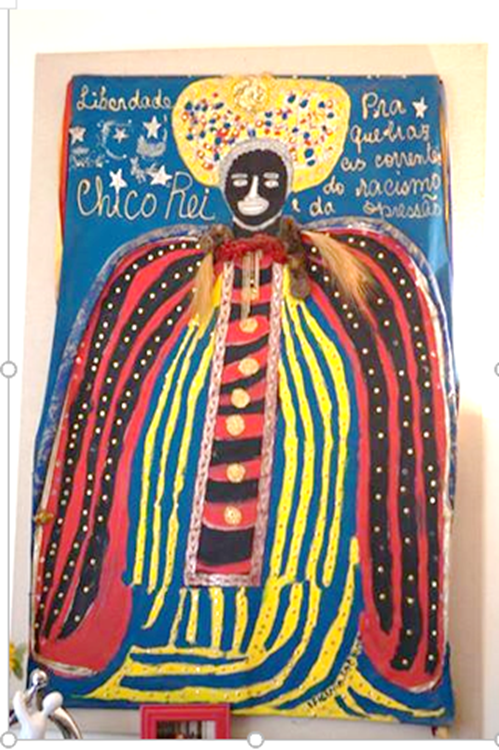(Opinion) All my Brazilian friends told me that Brazil is full of black magic, but I didn’t really believe them. The only black magic that had me in its spell was that ‘ole’ kind Frank Sinatra sang about.
Stories of solemn macumba rites and candomblé spirits left this gringo as skeptical as the sighting of UFOs and the invasion of the planet by little green men.
Even wearing white on New Year’s eve and jumping first on one foot and then the other in the waves and floating little baskets with candles and flowers on the water, while a charming reverence to Iemanjá hardly qualified as magic.
And that is now fading yellow Oxum ribbon around my wrist, printed with Lembrança Do Senhor Do Bonfim and ceremoniously tied with three knots, each with a wish attached, may or may not have been the force for my good luck.
That was before Chico Rei came into my life.
Some time ago, visiting the former gold mine in Ouro Preto, I noticed hanging on an outside wall opposite the desk where tickets to enter the mine was being sold what appeared to be a significant (more than a meter and a half tall) wonderfully colorful painting of Chico Rei, decorated with an attached fur collar, jewelry, and sequins.
It seemed a perfect example of real Brazilian naïve art, an expression that could only have come from the heart.
The kind lady behind the desk patiently explained how Chico Rei had been a tribal chief in the Congo when his people were enslaved and brought to Brazil to work in the mines.
When little gold was left, the mine owner Major Augusto, who had grown to like and admire Chico Rei, offered him and his tribe members freedom if they could extract the remaining gold.
They succeeded, and that’s why he was named a ‘king,’ and since the mid-18th century, he has been revered as an emancipator of enslaved people.
The banner had been made for the annual Nossa Senhora do Rosário commemorative processional.
Even my requests that are hanging outdoors were likely to be ruined by the elements, and my offer to purchase it, give it the display and recognition it richly deserved, and care for it were to no avail.
It had been a gift of the artist and could not be sold. Hoping to discover other masterpieces, I finally located the artist in the Ouro Preto favela.
She had nothing to show and told us she was not an artist. She decorated tea towels and said she simply made that banner to honor Chico Rei.
Some months later, I did manage to purchase the banner and hung it in a place of honor in my apartment.
That wonderful smiling face of Chico Rei greeted our guests and us as soon as the front door was opened. It filled the apartment with warmth and light.
One evening, coming home from a party, my wife stood on her toes in a moment of levity and kissed Chico Rei squarely on the lips.
At that exact moment of the kiss, there was a ‘bang,’ and the small carved wooden figa I wore around my neck exploded into seven pieces. Something genuinely magical was happening.
The figa had been lovingly carved and given to me by an artist friend in Imbu.
He instructed me to wear it forever as it had much-stored magic in it. He gave me a serious warning not to break or lose it, or the good luck it carried would be lost.
I searched and recovered all the pieces from inside my shirt.
What to do now I asked some friends who then consulted macumba and candomblé experts? As with opinions from all consultants, we received two conflicting answers.
One said I must immediately take the pieces to the sea and make an offering of them to Iemanjá.
The other said I should carefully repair the figa and continue to wear it religiously. But I must understand the seriousness of the message I had received from Chico Rei: he was very powerful and not to be made fun of.
Chico Rei has been taken excellent care of, is revered in a place of honor, and is always surrounded by fresh flowers and candles.
What’s left of my figa hangs around my neck.
Brazilian magic?
I’ve become a believer. Have you?


